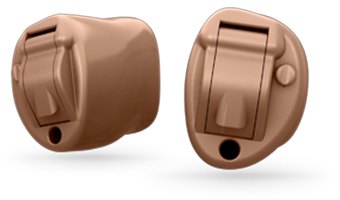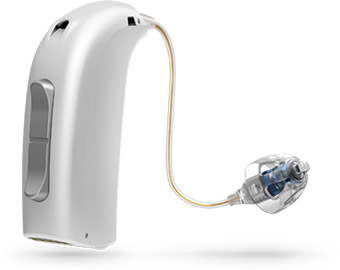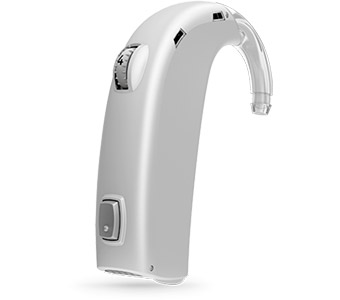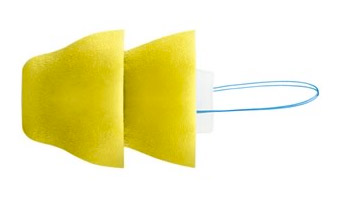Hearing aids benefit a majority of the 48 million Americans who have been diagnosed with hearing loss. They all serve the same basic function – amplifying sounds in order to help you hear more clearly – but the similarities end there.
Hearing aids are available in a wide range of styles and sizes; you’ll need to take into consideration a number of different factors when making a choice, including your lifestyle needs, budget, cosmetic preferences and the type and degree of your hearing loss.
The different styles of hearing aids are listed below.
Completely-in-the-Canal (CIC)/Invisible-in-the-Canal (IIC)
This hearing aid is placed in the ear canal and is the smallest available. It takes advantage of the ear’s natural ability to collect sound, and its discreet size makes the device virtually invisible to others. The trade-off is a shorter battery life, and it may prove difficult to adjust for those with poor manual dexterity. This is a good choice for mild to moderate hearing loss.
In-the-Canal (ITC)

This style is also designed to fit in the ear canal, but not as deeply as a CIC device, resting securely in the lower portion instead. It’s a little larger, making it easier to insert and remove and extending the battery life. For patients with mild to moderate hearing loss.
In-the-Ear (ITE)

This hearing aid is designed to fill the outer portion of the ear, and is larger than those worn in the ear canals. It is less discreet, but the size allows for more features and makes the unit easier to adjust. A bigger battery translates to longer life and means those with severe or profound hearing loss can benefit from this style.
Receiver-in-the-Ear (RITE)
A RITE hearing aid consists of a tiny housing that rests behind the ear and contains all electronics except the receiver. A thin tube connects the housing to the receiver, which is worn in the concha (bowl-shaped portion) of the ear. It’s a small and discreet unit but powerful enough for treating mild to moderately severe hearing loss.
Behind-the-Ear (BTE)

The most popular style of hearing aid (about 60 percent of users choose this type), a BTE device is curved to match the contour of the ear and rests directly behind the ear. The housing, which contains all the electronics, is encased in plastic and connects to the ear canal with a thin, clear tube or ear mold. Though more visible than other styles, the BTE is simple to use, making it a popular choice for children. It’s powerful enough for all types of hearing loss.
Open Fit
The Open Fit hearing aid is a smaller version of the BTE. Like that device, it rests behind the ear and includes a transparent tube that delivers sound to the ear canal through a very small earpiece. Because the ear canal is left unobstructed, there is less occlusion with this style, and the smaller size appeals to many adults. Prone to low frequency noise leakage, this style is best for mild to moderate hearing loss in high frequency ranges only.
Extended Wear

The latest innovation in hearing aids is extended wear devices (Lyric is the first such brand on the market) that are designed to be worn continuously for up to 120 days. Truly disposable, these hearing aids do not require battery changes and are meant to remain in place while the user participates in normal activities including exercising, showering and sleeping.
Cochlear Implants
Cochlear implants are designed to help severely to profoundly deaf adults and children who get little or no benefit from hearing aids. They work by stimulating the auditory nerve directly. Cochlear implants receive sound from the outside environment, process it, and send small electric currents near the auditory nerve. These electric currents activate the nerve, which then sends a signal to the brain. The brain learns to recognize this signal and the person experiences this as “hearing”. The cochlear implant somewhat simulates natural hearing, where sound creates an electric current that stimulates the auditory nerve. However, the result is not the same as normal hearing. Your audiologist will be able to tell you if your hearing loss may warrant a cochlear implant and he/she will refer you to an otolaryngologist (ENT) to determine your eligibility for an implant. If you might be a candidate, you will undergo a hearing aid trial before determining if you are a candidate. If you are in the San Francisco Bay Area, we recommend attending our Cochlear Implants Support Group to learn more about the challenges, risks, and benefits of a cochlear implant.
